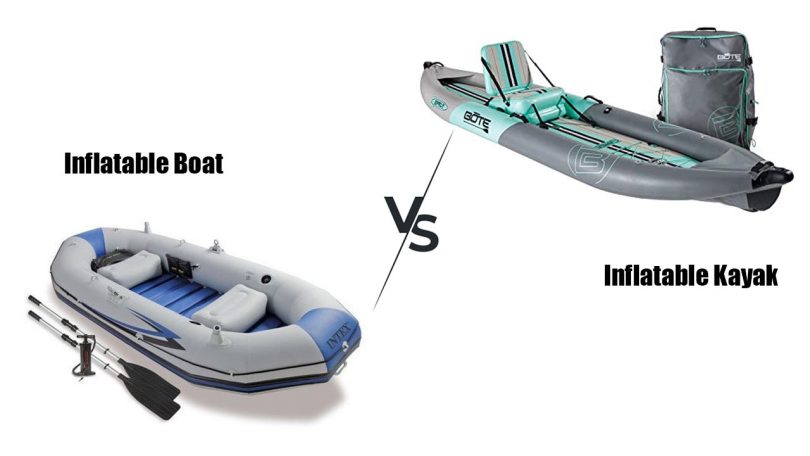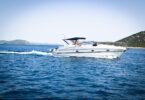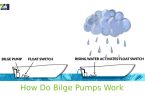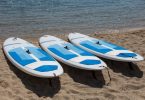Certainly, boats and kayaks allow for the full enjoyment of rivers, lakes and seas. However, taking them to an outdoor trip can be quite complicated. Without a trolley or special rack, you can never take them out of your garage.
Fortunately, inflatable versions of boats and kayaks are the definitive solution to portability and transportation issues. However, they offer many more advantages that maybe you don’t know.
Today we’ll show you the main differences between inflatable boat and kayak, including a detailed explanation of their pros and cons.
The Main Differences Between an Inflatable Boat & a Kayak
-
Shape
Inflatable boats have a large navigation surface, which makes them suitable to carry more than 2 people. On the other hand, inflatable kayaks have a narrower sailing surface and the most common models are designed to only carry 2 passengers.
Another notable difference is in the shape of the nose. Usually, inflatable boats have a wide and rounded nose, while kayak noses are pointy.
-
Interaction with water
Inflatable boats and kayaks have totally different shapes. Therefore, both interact with water in different ways. For example, the wide nose of inflatable boats makes padding much harder. Also, you won’t be able to travel long distances unless you have the extra help of a couple rowers.
However, with the addition of a trolling motor, inflatable boats experience less opposition from water than conventional hard-shell boats.
On the other hand, the smaller sailing surface of inflatable kayaks allows them to move faster with less effort. They are the bigger version of fishing float tubes. But, their narrower shape makes it difficult to install trolling motors. Although it is possible with certain modifications, the sailing experience won’t be the most comfortable of all.
-
Fishing features
Both inflatable boats and kayaks can be used for fishing. However, inflatable boats are by far the best for this purpose. They provide greater stability on the water, so they won’t shake too much while you try to catch a big fish.
In addition, inflatable boats allow performing modifications to enhance comfort. For example, you can install a hardwood floor that will allow you to cast and stand up on the boat. Also, their wider tail facilitates the installation of trolling motors and electric batteries.
On the other hand, the smaller size of inflatable kayaks also reduces the storage space they can provide. So, you won’t be able to carry too much fishing gear. However, inflatable kayaks allow you reaching to some inaccessible fishing areas, which would be impossible for a big inflatable boat.
Hobie inflatable kayaks are certainly the best for fishing. They include a foot pedaling system that allows you to move while you have both hands on the fishing rod.
-
Transportation options
In terms of transportation, inflatable kayaks are better. Some inflatable kayaks can be stored in large backpacks, so a single person can carry them everywhere. The same thing doesn’t happen with inflatable boats. At least 2 people are necessary to carry them with bare hands.
Compared with hard shell boats and kayaks, inflatable models are more practical. For example, hard shell boats require boat trolleys to be transported in an outdoor adventure. On the other hand, hard shell kayaks need special racks to be carried on cars.
-
Set up time
Usually, inflatable boats are more difficult to setup. For example, the bigger they are, the more powerful the air pump must be to inflate them. You may take more than 10 minutes trying to set up your inflatable boat if you don’t use a proper pump.
Also, you’ll need additional time to install the motor, seats and other add-ons. On the other hand, the simplicity of inflatable kayaks makes them much easier to set up.
They don’t require too powerful pumps and they’re ready to be used after being inflated.
-
Materials
Both, inflatable boats and kayaks are made with the same materials. The most common are PVC, polyurethane and hypalon. PVC models are the cheapest of all, but also the least durable. The limited flexibility of this material makes PVC boats and kayaks prone to surface cracks.
Polyethylene is much more flexible, durable and resistant than PVC. In addition, it can be easily repaired using patches and glue. However, hypalon is by far the best material of all.
This synthetic rubber developed by DuPont is highly resistant to external agents, chemicals and UV rays. It’s the ideal material for extreme water sports like rafting. Also, the lifespan of a hypalon boat can exceed 20 years.
-
Control
The pointy nose of inflatable kayaks makes them easy to maneuver through waters. Kayaks better break the surface tension of water, experiencing less opposition to movement. So, they allow you to develop high speeds with less padding.
In addition, the low weight of inflatable kayaks allows changing direction by slightly varying the inclination of your torso.
On the other hand, inflatable boats are much more difficult to maneuver without a trolling motor. Their wide sailing surface tends to keep them stranded on the same position. The larger the boat, the more rowers will be needed to move it.
-
Maintenance and storage
Due to its smaller size, inflatable kayaks can be stored in tight spaces. This is a great advantage for those adventurers who live in small apartments. However, inflatable boats are a bit bigger, so you’ll need some extra space to store them.
However, both inflatable boats and kayaks fit in the trunk of a car. So, they’re perfect for any outdoor adventure.
Maintenance costs in kayaks are much lower, due to their smaller surface area. So, the amount of materials required to repair air leaks and other failures is less compared to inflatable boats.
-
Average weight
The average weight of inflatable kayaks is around 30-40 lbs. However, some rigid inflatable boats can weigh more than 300 lbs without the engine. Considering that an average man can raise around 55 lbs, inflatable kayaks are certainly the best option for a solo adventure.
-
Safety level
The low weight of inflatable kayaks makes them particularly unstable and insecure in certain circumstances. For example, they tend to drift when the wind blows hard. So, if you don’t want to be swept away, consider the weather conditions first before taking a kayak trip.
On the other hand, inflatable boats offer a safe and quiet trip, thanks to their wider sailing surface.
-
Average cost
In the current market, the price of an inflatable kayak is around $150- $600. They’re certainly a cheaper option compared to buying inflatable boats, whose minimum price is around $250. You can find other much cheaper options, however their strength and durability is much lower.
Inflatable Boat or Kayak: What is the best choice?
Certainly, there are many divided opinions about which one is better: the inflatable boat, or the inflatable kayak. However, each option has its own pros and cons. It’s up to the user to determine which one is the best of them.
For example, inflatable boats are the best for fishing enthusiasts. Instead, inflatable kayaks are recommended for those with adventurous spirit. In terms of safety, inflatable boats are far superior, but they aren’t as portable, compact and lightweight as inflatable kayaks.
In conclusion, each model can play in your favor or against you. Therefore, before making any decision, consider your requirements first. Then, choose the option that meets each of those requirements.








Leave a Comment